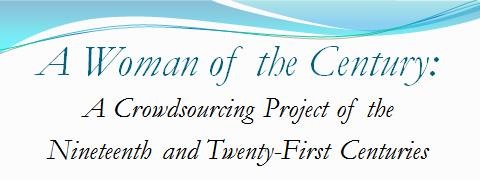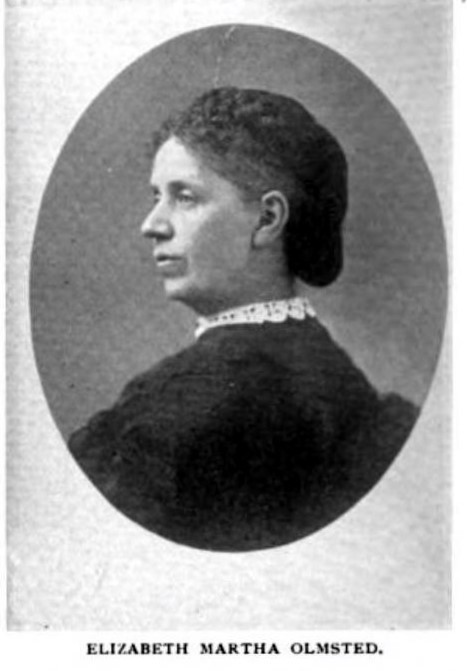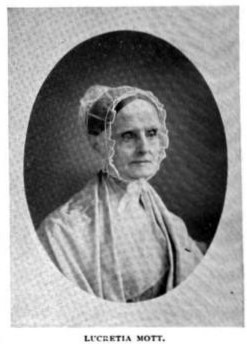December 31 - January 6
Women of the Week
Poet and lyricist Elizabeth Martha Olmsted, who was born on December 31, 1825, and reformer Lucretia Coffin Mott, who was born on January 3, 1793, are this week's Women of the Week.
-
To learn about them by viewing their items, please click on their images.
-
To read their biographical sketches in A Woman of the Century, please click on the highlighted page numbers to the left of their images.
Poet and lyricist Elizabeth Martha Allen Olmsted was born in Caledonia, New York, on December 31, 1825. She graduated from Ingham University in Le Roy, New York in 1847. Soon after graduation, her graduation poem was published in The United States Democratic Review.
Elizabeth married John Randolph Olmsted in 1853 and became the mother of six children. The family lived in Le Roy. She also continued to publish poems, and her works appeared in The Independent, The Little Corporal, The Little Pilgrim, and other periodicals. Sara Jane Lippincott and Theodore Tilton were two editors she was associated with.
In addition to her career as a poet, Elizabeth was a lyricist. She wrote the lyrics for Alumnae Re-union: Welcome Song, published in 1870, and Henri Appy wrote the music.
Elizabeth published Poems Of The House And Other Poems, which she dedicated to her children, in 1903.
She passed away on February 7, 1910.
Reformer Lucretia Coffin Mott was born in Nantucket, Massachusetts, on January 3, 1793. She was related to Nantucket natives Anna Gardner, Rev. Phebe Anne Hanaford, and Juliet H. Severance, as well as to Benjamin Franklin.
Lucretia's Quaker family moved to Boston, Massachusetts, and then to Philadelphia, Pennsylvania. She went to Millbrook, New York, to attend Nine Partners School, a Quaker school, where she met James Mott, a teacher at the school. Lucretia and James were married in 1811. After graduating from Nine Partners School, she taught there. Later, Lucretia became a Quaker minister. James and Lucretia made their home in Philadelphia.
Throughout her life, Lucretia was active in reform efforts, writing and speaking eloquently and passionately about the topics that she believed in, as well as organizing and attending meetings and conventions. Lucretia was instrumental in the founding of the Philadelphia Female Anti-Slavery Society in 1834. She also was very involved with the Pennsylvania Peace Society, the American Anti-Slavery Society, and women's suffrage activities. She, her sister Martha Coffin Wright, and Elizabeth Cady Stanton were the movers behind the Seneca Falls Convention in 1848. She also worked closely with Lucy Stone and Susan Brownell Anthony. Since she was very interested in supporting higher education, Lucretia was one of the founders of Swarthmore College and actively supported the Woman's Medical College of Pennsylvania.
In addition to the individuals mentioned above, her vast personal network included numerous people, including Rachel Foster Avery, Amanda Deyo, Mary J. Scarlett Dixon, Frederick Douglass, Priscilla Holmes Drake, William Lloyd Garrison, Anna Davis Hallowell, Agnes Nininger Kemp, Martha H. Mowry, Wendell Phillips, M. Adeline Thompson, and John Greenleaf Whittier.
Lucretia passed away in Philadelphia, Pennsylvania, on November 11, 1880.


